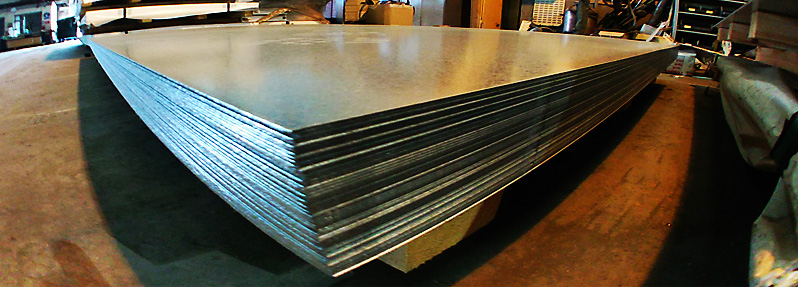Did you know that galvanization is the process of applying a protective zinc coating to steel or iron to prevent rusting? The most common method in sheet metal fabrication shops is hot-dip galvanizing. This is the process of submerging metal parts in a bath of molten zinc to protect the metal.
This protection occurs in three different ways:
- The zinc coating, when intact, prevents corrosive substances from reaching the underlying steel or iron.
- It acts as a sacrificial anode, which is the main component of a galvanic cathodic protection (CP) system used to protect buried or submerged metal from corrosion. This means that if the coating is scratched, the exposed steel or iron will be protected by the remaining zinc.
- The zinc protects its base metal by corroding before iron.
So, which sheet metal projects require this kind of complex protection process?
The most popular uses for galvanized sheet metal are:
Construction projects: Generally, the most common use for sheet metal is for commercial construction projects. However, galvanized sheet metal-specific uses include:
- Awnings
- Balconies
- Building frames
- Canopies
- Ductwork
- Handrails
- Fences
- Industrial walkways
- Ladders
- Staircases
- Street Furniture
- Support Beams
- Verandas
Electronics: Computer casings and precision instruments are made with zinc coating because it’s moisture- and rust-resistant.
Nails, nuts, and bolts: Unfortunately, the hot-dip coating process provides too much fill in the threads of nuts and bolts that are ⅜-inches or smaller, which can reduce the strength.
Instead, electro-galvanizing (which involves electroplating, a process where a current of electricity is run through a saline/zinc solution with a zinc anode and steel conductor) and stainless steel are used. These electro-galvanized nuts and bolts go into light mechanical products, like cars and bicycles.
Piping: Galvanized piping replaced cast iron and lead in cold-water plumbing in the early 20th century. The life expectancy of galvanized plumbing is about 70 years, depending on the region’s impurities in the water supply, proximity to electrical grids, thickness of zinc, and whether the piping was coated on the inside and outside.
To increase the longevity, some galvanized piping were lined with epoxy resin, which is a petroleum-derived material known for its excellent adhesion, chemical and heat resistance, and insulation properties.
After World War II, galvanized pipes were replaced by copper and plastic piping for interior water drinking service in homes, schools, and similar locations. However, galvanized steel pipes are still used for outdoor applications that require the metal’s superior mechanical strength, especially in poor weather.
Playground equipment: Childrens’ play equipment like bicycle racks, jungle gyms, and swingsets are made with galvanized steel because it’s rust-resistant.
Transportation: Cars and aircrafts are large consumers of galvanized steel, as the industries use it for:
- Hoods
- Fenders
- Oil pans
- Parking brakes
- Roofing
- Seating
- Spring housing
Wire rope: Because wire rope is a highly stressed product, the hot-dip coating process can reduce the strength of the steel on a measurable scale due to hydrogen embrittlement. This is when the steel becomes brittle due to the introduction and subsequent diffusion of hydrogen into the metal.
To solve this problem, stainless steel is used for products, such as electric cables, construction binding materials, window locks, and more.
In short, zinc is resistant to corrosion, moisture, rust, and scratches. It protects the metals during transportation, installation, and service (which isn’t required often due to the self-healing abilities of galvanization). From playgrounds and laptops to car and airplanes, these projects would be nothing without hot-dip galvanizing.
For more information on galvanized sheet metal, contact Ferrum Steel, based in Dublin today..

